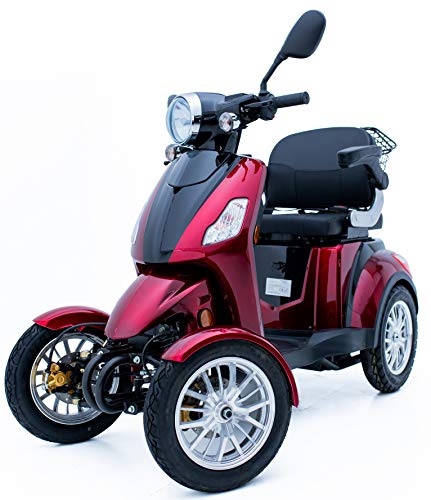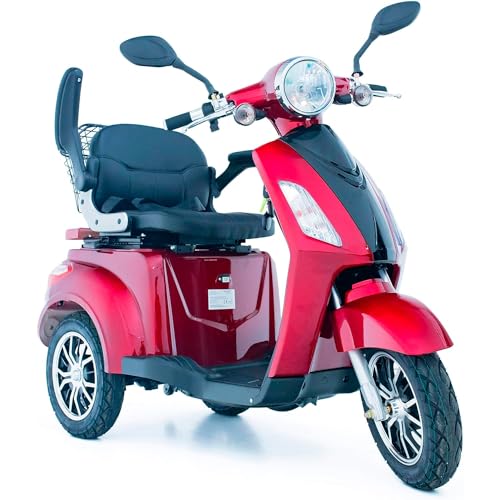You'll Never Guess This Green Power's Tricks
페이지 정보

본문
 What Is Green Power?
What Is Green Power? Green power is electricity produced from renewable sources like solar, wind, geothermal, some kinds of biomass and hydroelectricity that is low-impact. It is available to consumers in markets that are not regulated and who wish to promote cleaner energy sources by paying an additional cost to their utility bill.
Green power is electricity produced from renewable sources like solar, wind, geothermal, some kinds of biomass and hydroelectricity that is low-impact. It is available to consumers in markets that are not regulated and who wish to promote cleaner energy sources by paying an additional cost to their utility bill.Many renewable energy sources are less damaging to the environment than drilling for coal or oil. They also help reduce our greenhouse gas emission.
Solar Energy
Solar energy is a favored scooter green power energy source. Solar energy is considered to be as a renewable resource since it will never be exhausted. It is a clean, efficient and safe energy source that reduces greenhouse gas emissions as well as air pollution caused by conventional fossil fuels like natural gas, coal, and oil. This energy source is a great alternative to nuclear power, which requires the mining extraction, storage and transport of radioactive waste.
Photovoltaic panels and concentrated solar thermal energy (CSP) are all ways to harness the power of the sun. Solar power mobility scooter can be delivered directly to homes and businesses or to grids which distribute electricity to other. Some customers even have the option of selling their surplus energy back to the utility company, which helps reduce electricity bills and even offset rising utility prices.
All types of solar energy create zero emissions of pollutants or air unlike fossil fuels, which generate carbon dioxide and other harmful gases during their combustion. Solar energy can also be used to power other types of devices, including spacecrafts, boats, satellites and other vessels that cannot connect to the electrical grid is impractical or impossible.
On smaller scales, solar can also be used to power buildings. Many homeowners use PV cell panels on their roofs to produce electricity and passive solar homes design lets these homes let in sunlight during the day to provide warmth and then keep it in the evening. Solar-powered houses also have the benefit of needing very little maintenance.
Another type of solar power is hydropower, which makes use of the natural flow of the water in streams, rivers and dams to produce electricity. Like wind and biomass hydropower, it is renewable since it can be replenished. If you are seeking to add hydropower to your business or home take a look at EPA's list of third-party certified options.
Geothermal Energy
Geothermal plants use heat from the Earth to generate electricity. The process makes use of hot water and steam which naturally occur a few kilometers beneath the surface of the earth. It is a remarkably renewable and sustainable energy source that generates electricity all day long and 365 days of the year. Geothermal power could reduce our dependence on fossil fuels. It is also one of the most environmentally friendly methods of energy generation.
The most commonly used geothermal power plant is the flash-steam plant. This uses water at a temperature of about 182deg C (360deg F) to generate electricity and power turbines. Steam can be used to heat industrial processes or buildings. Iceland for instance, utilizes geothermal energy to melt snow and heat its streets, sidewalks and parking spaces during the frigid Arctic winter.
A hot dry rock power plant is a different geothermal source of energy. It taps underground reservoirs comprised of hot, dry rock that has been heated by either natural activities. HDR plants are less difficult to construct and operate since they require less infrastructure. The National Renewable Energy Laboratory estimates that there is enough HDR resources in the United States to meet all of our current needs for electricity.
The steam generated by geothermal power plants can be used to create electricity through a steam-turbine generator, or it could be coupled with a gas-fired turbine to increase efficiency. The resulting mixture can then be converted into natural gas, which is burned in a traditional boiler to generate electricity.
Geothermal energy isn't just reliable and clean, but it also has the smallest carbon footprint of all renewable energy sources. Binary-cycle plants that utilize an engine to convert steam into electricity generate minimal or no nitrous oxide methane, sulphur and oxide.
Geothermal energy is not without its problems, despite the advantages. The drilling required to establish geothermal power stations can cause earthquakes and can cause groundwater pollution. Furthermore, the dumping of high-pressure streams into geothermal reservoirs could lead to subsidence, which is a gradual sinking soil that could damage pipelines roads, buildings, and pipelines.
Biogas
Biogas is a gaseous renewable energy source that can be used to produce green energy. It can be produced from agricultural wastes, manure, plants and sewage, food wastes, municipal garbage, and other organic wastes. Biogas can be converted to transportation fuels, electricity, heat, combined heat and energy, or electricity using the Fischer-Tropsch method. Biogas can also be used to produce renewable hydrogen that is used in fuel cells. Fuel cells are expected to play an important role in the future energy systems around the globe.
The most common way to make biogas more valuable is by creating electricity in the combined heat-and-power (CHP) plant. The heat generated by the CHP process is used to assist in the fermentation of the organic waste, and the electricity is fed into the grid. It can also be converted into natural gas and blended into existing natural gas distribution systems. Biogas can be used to replace imported mined gas in residential and commercial structures, ground transportation, and other areas.
Biogas is a renewable energy source that can also reduce greenhouse gas emissions. The CCAC is attempting to provide tools to measure, report and confirming (MRV) of clean cooking in households and communities in low- to middle-income countries to assist the nations that have included clean cooking targets in their Nationally Determined Contributions (NDCs).
Using biogas to replace fossil fuels for electricity generation as well as a substitute for conventional natural gas for cooling and heating will reduce carbon dioxide emissions and other air pollutants. Biogas can also be used to create liquid transportation fuels as an alternative that is sustainable to coal, oil, and other fossil fuels.
Recovering methane from food and animal manure waste helps to prevent the release of greenhouse gases into the atmosphere, as well as stopping nitrogen runoff that could otherwise pollute water resources. Plessis-Gassot, a landfill that is not hazardous located in Claye-Souilly (France) for instance, captures and converts biogas into a renewable source of energy for households who are connected to the system. In addition small-scale biogas plants could be set up in cities to permit the collection and utilization of organic waste from local sources, avoiding greenhouse gases caused by transport and treatment of these materials.
Hydroelectric Power
Hydropower harnesses the energy generated by the kinetic energy of water to generate electricity. It is the most sought-after and cost-effective renewable energy source around the globe. It does not emit greenhouse gases directly however it has significant environmental impact. It is a flexible type of green energy that can be adjusted to meet changing demand and supply. Its lifespan is more than 100 years and can be upgraded to improve efficiency and performance.
The majority of traditional hydropower plants harness energy of the falling water by using dams. The kinetic energy of the water is converted into electricity by the use of turbines which spin at a rate proportional to the velocity of the water. The electricity is then transferred to the grid of electricity for use.
Hydroelectric power plants require an enormous investment in pipes and reservoirs. However the operating costs are green power mobility scooters any good low. Additionally, these plant are able to serve as backups to other intermittent renewable power technologies such as wind and solar.
Hydroelectric plants can be classified into two types that are storage and run of river. Storage plants are characterized by huge impoundments that hold more than a season's supply of water. Run-of-river facilities have a small impoundment and draw water from flowing rivers or streams. Hydropower facilities are often situated near or in proximity to areas of population, and in areas where there is a huge demand for electricity.
The environmental impact of hydropower is dependent on the size and location of a dam, the amount of water that is displaced, and the habitat and wildlife affected by decomposition and flooding. The effects of hydropower can be mitigated and reduced by using Low Impact Hydroelectricity Standards (LIHI) for the construction and operation of hydropower project. The standards provide measures to protect river flows and water quality as well as protection of fish passage and watershed protection, endangered and threatened species, recreation and cultural resources.
In addition to producing renewable energy, some hydropower plants act as the world's largest "batteries." These are known as storage facilities pumped by the government and work by pumping water uphill from a lower pool to a larger reservoir. If there is a requirement for electricity, the water in the lower reservoir is released to power generators, whereas the water in the upper reservoir is pumped back downhill by a turbine to create more electricity.
- 이전글5 Laws Everyone Working In Couch In UK Should Know 25.04.02
- 다음글Could Adults ADHD Test Be The Key To 2023's Resolving? 25.04.02
댓글목록
등록된 댓글이 없습니다.

